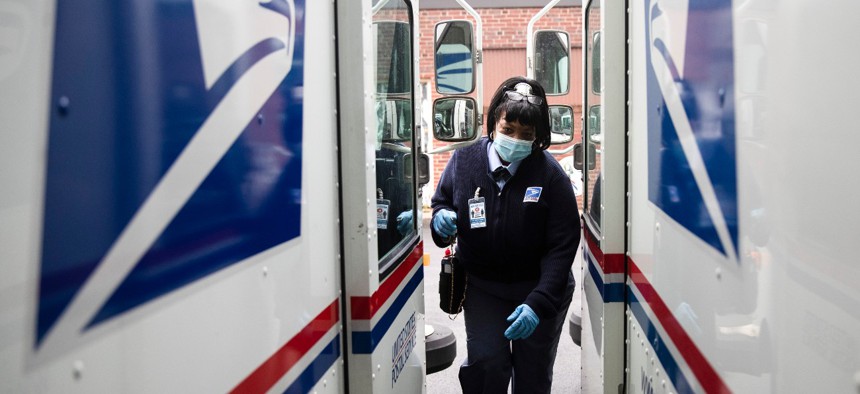Postal Service Indicates Layoffs Could Be on the Horizon
USPS says it hopes to find landing spots for impacted workers as it implements "administrative reductions."
The U.S. Postal Service is leaving the door open to involuntary layoffs as it seeks to downsize its managerial and administrative staff, part of an ongoing effort to reorganize the agency.
USPS first announced it would offer voluntary early retirement to eligible non-bargaining unit workers in early March. It declined to say how many employees it was targeting for the staffing reductions, announcing only it would finalize its plan in May.
Ahead of that rollout, postal management has not ruled out reductions in force, the government term of art for layoffs. The National Association of Postal Supervisors, the management association that represents most of the impacted workers, said USPS has informed the group there could be a RIF forthcoming. Much will depend on how many employees accept the early retirement offers, as well as how the Postal Service’s final structure and staffing plan takes shape next month. The early retirement offers, which did not come with any buyout incentive, were part of a "RIF-avoidance" process.
“There will be employee impacts as a result of district closings and administrative reductions,” said Dave Partenheimer, a USPS spokesman. “The specific employee impacts have not been determined at this time.”
Employees must be at least 50 years old with 20 years of federal service, or any age with 25 years of service, to qualify for early retirement. They must make a decision by April 16 and vacate their jobs by April 30. The offers were precipitated by a consolidation of USPS’ 67 districts into 50.
NAPS President Brian Wagner said USPS anticipates a second round of early retirement offers would accompany RIF procedures. He commended postal management for working closely with his organization throughout the process and said he expects affected employees would likely have an opportunity to take a reassignment to avoid a layoff. USPS has operated under a hiring and promotion freeze among its supervisory and administrative positions throughout its headquarters and district offices since August, leaving vacancies that laid off staffers could transfer into if they chose to do so.
In a press conference last week, Postmaster General Louis DeJoy gave a hint as to the Postal Service’s goals.
“The plan that’s in process right now is an administrative headcount reduction of some 60,000 people that was brought about with our realignment,” DeJoy said. Parenheimer later clarified DeJoy was referencing the entire population of management employees at USPS, not all of which would be impacted by the restructuring.
DeJoy also sought to downplay that his approach was anything out of the ordinary.
The plan will “reduce the size of our administrative organization, which is not uncommon when we go through big, big reorganizations and reestablishment of what you’re going to be doing in the future,” the postmaster general said.
Wagner said he has not heard anything specific on the Postal Service’s plan, noting it is waiting until May to finalize its plans. Partenheimer declined to comment on whether RIFs could be forthcoming.
“We will follow long-established, responsible processes for managing through transitions, providing options for our people to take on new or changing responsibilities, and to pursue career opportunities within the Postal Service.
USPS has held a dozen information sessions with eligible employees to go over the benefits of early retirement.
One current postmaster, part of the impacted group of employees, said the workforce was frustrated that postal management was only laying out its plans in phases.
“We seem to be left in the dark this time around,” the postmaster said.
DeJoy said he does not have a specific long-term target in mind for its workforce, speculating he could potentially grow the agency by 100,000 employees to meet growing package needs. He added, however, the agency’s high turnover rates will likely highlight areas for efficiencies.
USPS last offered early retirements on a large scale in 2018 when it provided the incentive to 26,000 mail handlers and clerks. The Postal Service said at the time those offers were part of an effort to “right-size” its workforce in response to accelerating declines in mail volumes. It went through several workforce reduction efforts in the early 2010s as it consolidated mail processing plants and slowed down mail delivery. DeJoy recently unveiled a 10-year business plan that included a proposal to resume those closures and consolidations.
NEXT STORY: GovExec Daily: Mental Health in the Workplace




